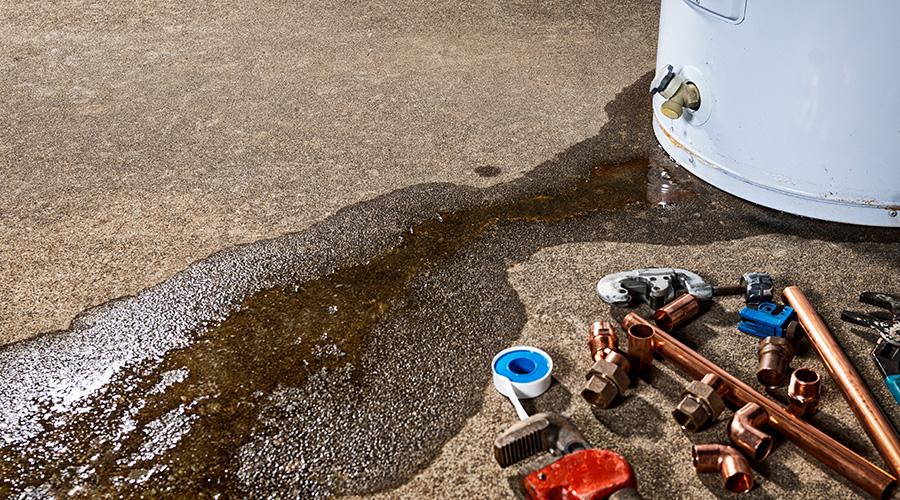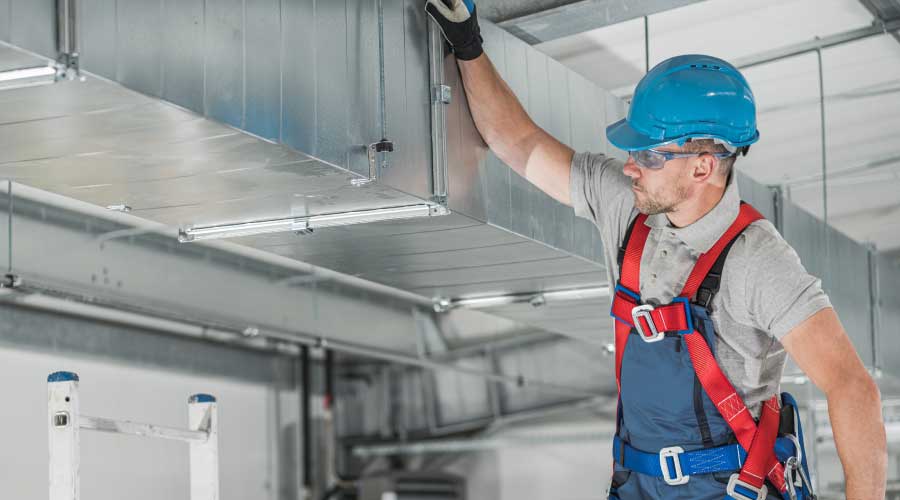Scope of Airport Chiller Project Provides Challenges
“The scope of this project is not a standard construction project,” Payne says. “It includes the renovation, refurbishment, code upgrades, and complete finish out of the previous chiller-plant upgrades. It also includes a complete chiller plant commissioning and a thorough test and balance of the secondary chilled-water loop from the chiller plant to each of the (control panels) where the tertiary chilled-water loops begin at 40 mechanical rooms across the existing terminals and concourses.”
The goal of the project is to upgrade, optimize and automate the airport’s Central Chiller Plant-East, as well as the terminal-wide chilled water system.
“The intent is to provide a completely automated operating chilled-water system fully commissioned, refurbished and balanced with a complete maintenance program,” Payne says. Perhaps most importantly for Payne’s department, the project includes a complete upgrade and consolidation of control systems to allow for a completely automated chiller plant.
“We had problems with the controls now that we added so much additional tonnage,” Payne says, referring to new terminal construction and expansion. “So we had to go out and make sure that the controls at the plant were operating to take into consideration the tonnage at the terminal.”
The chiller upgrade is part of a $6.4 billion capital improvement program that encompasses all aspects of airport operations, from the terminal and roadways to the cargo facilities and the airfield, and was completed earlier this year.
The airport’s facilities maintenance and engineering division has about 420 maintenance and engineering personnel and is responsible for maintaining the airport’s terminal and concourse space.
The challenge is immense, considering the airport’s size and level of activity. Among U.S. airports, it ranks first in international freight and second in international passengers. An estimated 40.5 million passengers moved through its terminals in 2013.
The terminal building complex also includes a hotel and six parking structures. Originally constructed in the late 1950s, the terminal has grown to more than 7 million square feet. The airport’s north and south terminals, extending from the central terminal, have added more than 4 million square feet to the existing 3.5 million square feet of space. The north terminal was rebuilt and expanded, while the south terminal is new.
The age of the facilities, as well as stress on the infrastructure from expansion and constant use, have combined to create challenges for Payne’s department.
“We had some pumps that needed to be repaired and some cooling towers that needed work, and the floor needed to be replaced in the old plant,” he says. “The old chillers were leaking, so we had to have those repaired. So there were some internal things, not just from a systems approach but also some pieces of equipment that needed to be repaired. We also had a problem with the makeup water, the domestic water, in the plant, and we had to size that properly.”
The sheer size of the chiller plant’s infrastructure also created challenges both in terms of routine maintenance and preparation for the plant upgrade.
“We have miles of piping that goes to secondary and tertiary systems,” Payne says. “All of those had to be redone and re-inspected and analyzed to determine if the pumping situations at the secondary and tertiary pumping stations were responding from the field back out to the plant, and all that information in terms of temperature and pressure was taken into consideration as we determine how many chillers we need online and offline.
“So with the additional tonnage and space (in the new and expanded terminals), we had to re-evaluate because the plant was still semi-manual. There are two plants, and they are now working together. They were working together before, but we made their operation more efficient and cost-effective” with the upgrade.
Related Topics:














